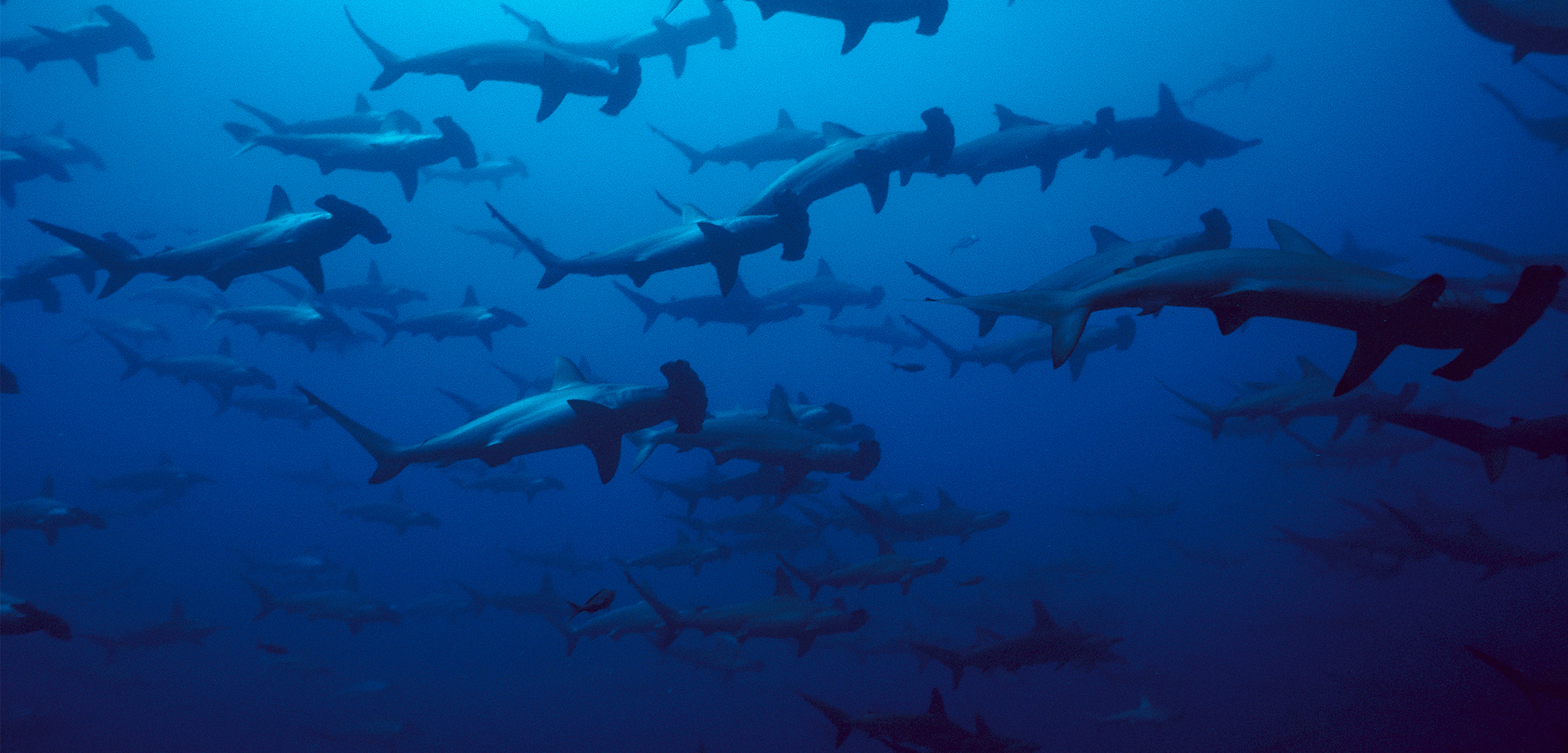Voting on the Future of the Shark Fin Trade
A vote next week will decide whether to overhaul the regulation and monitoring of the international shark fin trade.
Article body copy
Next week, representatives from more than 180 nations will attend the 19th conference of the Convention on International Trade in Endangered Species of Wild Fauna and Flora (CITES)—an international treaty tasked with regulating the trade of endangered species. At this year’s meeting, among the 52 items on the docket, are two proposals—Proposal 37 and Proposal 38—aimed squarely at revolutionizing the global shark fin trade.
Like many international treaties, CITES is nuanced, complex, and technical. Generally speaking, though, CITES can wield two major tools: Appendix I, which effectively bans international trade in a species, and Appendix II, which permits international trade but requires that it be strictly monitored and regulated. To export animal parts from a species listed in Appendix II, countries must provide proof, by way of a document called a non-detriment finding, that the species’ population is not being harmed.
Proposals 37 and 38 are both looking to leverage Appendix II to curtail the trade of shark fins from species of conservation concern. Proposal 37 will list every single shark species in the family Carcharhinidae, one of the largest shark families, which includes 56 species such as bull, reef, blacktip, and sandbar sharks. Proposal 38 would do the same but for the family Sphyrnidae, the hammerhead sharks.
The real key to proposals 37 and 38, though, is that they are looking to cast a much wider net than just listing the species of conservation concern. Instead, they propose protecting the many species that even look like a species threatened by trade. The idea behind this so-called look-alike rule, says Luke Warwick, director of shark and ray conservation for the Wildlife Conservation Society, is to streamline enforcement.
“If a species included in the trade looks like a species you’re proposing to list, you include it in the proposal,” Warwick says. “Otherwise, at the customs and enforcement level, it would be difficult or impossible to tell those species apart and enforce the rule.”
Notably, CITES has already used this approach of protecting a whole family rather than just the single species of concern for some terrestrial animals, including some types of parrot.
Applying the look-alike rule to protect every species in the Carcharhinidae and Sphyrnidae families would mean that for the vast majority of species whose fins are part of the global shark fin trade, it would become impossible to sell those fins across an international border without the exporting country first demonstrating that wild populations are not being harmed. If a country can’t meet that bar, the two proposals would effectively end that country’s role in the international shark fin trade.
Right now, CITES protects the species whose fins represent about one-quarter of the shark fin trade. If both of these proposals are accepted, that number will jump to around 90 percent by some estimates.
“This would be a game changer in terms of ambition and oversight,” says Warwick.
Both proposals are being sponsored by Panama, the host of this year’s CITES meeting, and have support from the European Union and countries from the Middle East, Africa, and Asia. If the proposals pass, any new restrictions would likely not come into effect immediately. CITES often allows a grace period of a year or more for nations to prepare to implement new rules.
If they are accepted, though, proposals 37 and 38 will be the latest victory in the long, difficult quest for conservationists seeking CITES protections for sharks.
Though CITES was created in 1973, the first attempt to protect cartilaginous fishes, which include sharks, rays, and skates, was an unsuccessful US-led effort in 1997 to protect sawfishes. “This failure was deeply disheartening,” says Sonja Fordham, the president of Shark Advocates International and a CITES veteran.
In the early 2000s, Fordham says, efforts to garner CITES protections for sharks, even for large filter-feeders like basking sharks and whale sharks, “faced exceptionally fierce opposition.” In 2002, those two shark species narrowly received Appendix II protections.
“Beyond the resulting benefits for the individual species, it was an important turning point in having sharks recognized as not just commodities but also as wildlife,” Fordham says.
The next major milestone was the 2013 CITES listing for shark species that were the targets of major commercial fisheries, including porbeagles, oceanic whitetips, and some species of hammerheads. Protections for mako sharks followed in 2019. But the Appendix II listing for all sphyrnid and carcharhinid sharks would cover the most species.
Although these new proposals have a lot of support, conservationists aren’t popping the champagne just yet.
Nations are not required to declare their support or opposition in advance of the CITES meeting, so it is difficult to gauge which way the vote will fall. Opposition to the proposals could take many forms, including claims that CITES is the wrong forum for protecting marine fishes. Since the proposals would require fishing nations looking to participate in the shark fin trade to potentially make expensive reforms to improve their sustainability, some nations may object for financial reasons. But experts like Fordham are optimistic.
“I’m hopeful that as the CITES listings for sharks are implemented with increasing ease and success, the challenge of adding additional worthy, yet less popular, species to the appendices will become easier.”

